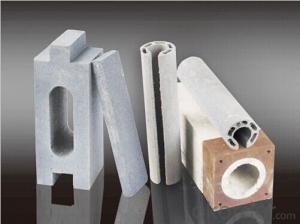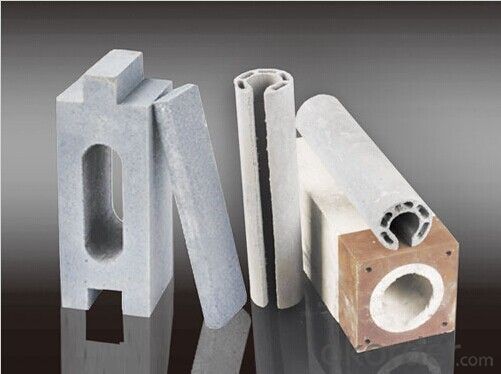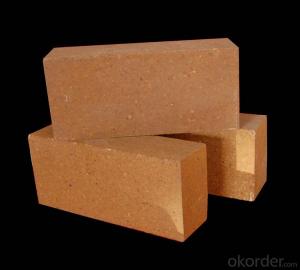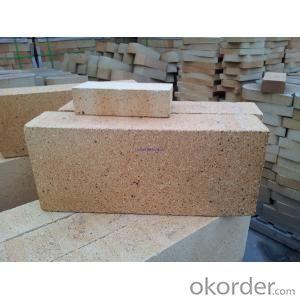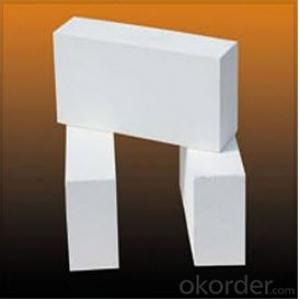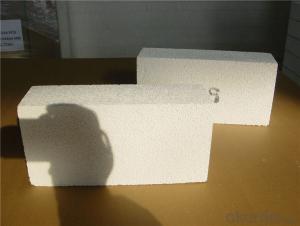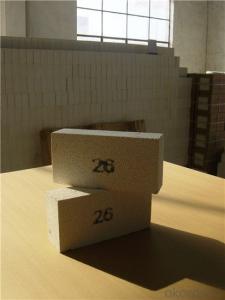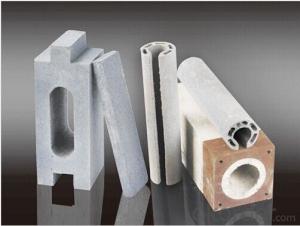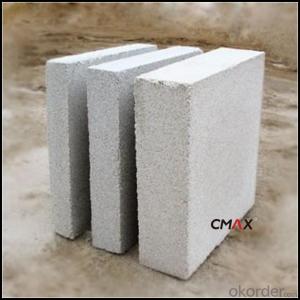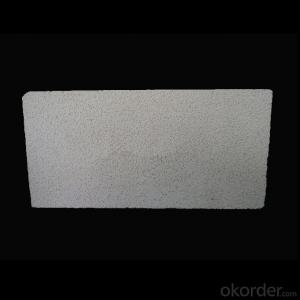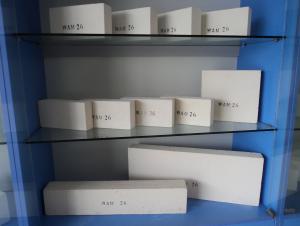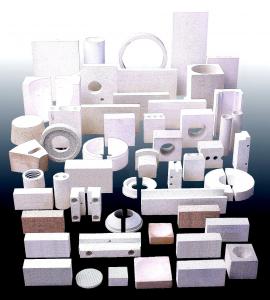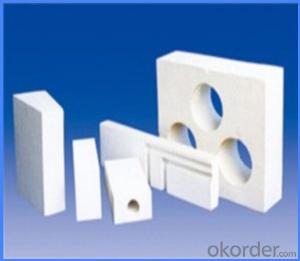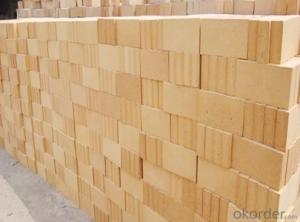Silicon Nitride-Carborundum Insulating Fire Brick
- Loading Port:
- China Main Port
- Payment Terms:
- TT OR LC
- Min Order Qty:
- -
- Supply Capability:
- -
OKorder Service Pledge
OKorder Financial Service
You Might Also Like
1. Characteristic
High strength
Low thermal expansion coefficient
Good thermal conductivity and thermal shock resistance
Good resistance to liquid aluminum erosion capability
High erosion
2. Applications
Widely used in large aluminum electrolytic cell of lining material. In the electrolytic aluminium industry, because of nitride bonded silicon carbide products can be made thin wall lining, enlarge the tank capacity, improve the thermal conductivity, can rapid cooling, and they are permitted to enter a higher power, increase the tank production capacity, at the same time, in its surface can form alumina and cryolite of eutectic content, in order to protect the tank lining work layer, prolong service life, therefore, this product is aluminum industry generally welcome.
3. Physical and Chemical Index of silicon nitride bonded silicon brick used in cooling stave
| ITEM | INDEX | |||||||
| SiC % | 72 Min | |||||||
| Si3N4 % | 21 Min | |||||||
| Fe2O3 % | 0.5 Max | |||||||
| Porosity % | 18 Max | |||||||
| Bulk density g/cm3 | 2.65-2.70 | |||||||
| Bending strength MPa | Room temperature °C | 42 | ||||||
| 1400 °C | 45 | |||||||
| CCS MPa | 150 Min | |||||||
| Thermal conductivity w/m·k 1250 °C | 15-18 | |||||||
| Tolerance | 0-100 mm | ±1.0 | ||||||
| 101-300 mm | ±1.5 | |||||||
| 301-500 mm | ±2.0 | |||||||
| More than 500 mm | ±0.5% | |||||||
| Surface irregularity | 0.2 Max | |||||||
| Face verticality | 0.5 Max | |||||||
| Diagonal difference | 2 Max | |||||||
- Q: What industries commonly use insulating fire bricks?
- Insulating fire bricks are commonly used in industries such as steel, aluminum, ceramics, glass, and cement production, as well as in various high-temperature applications like furnaces, kilns, incinerators, and thermal insulation systems.
- Q: Can insulating fire bricks be used for pizza ovens?
- Indeed, pizza ovens can make use of insulating fire bricks. These bricks have been specifically crafted to endure extreme heat and offer exceptional insulation, positioning them as an optimal selection for pizza ovens. By possessing low thermal conductivity, insulating fire bricks excel at retaining heat for extended durations, guaranteeing that your pizza is evenly and efficiently cooked. Moreover, their lightweight composition allows for effortless handling and installation in a pizza oven. Ultimately, the utilization of insulating fire bricks within a pizza oven can effectively uphold high temperatures, diminish heat loss, and enhance the overall cooking proficiency.
- Q: Are insulating fire bricks suitable for insulation in steam boilers?
- Yes, insulating fire bricks are suitable for insulation in steam boilers. Insulating fire bricks are made from lightweight materials that have high insulating properties, such as alumina or silica. They are designed to withstand high temperatures and thermal shocks, making them ideal for use in steam boilers where there is constant exposure to heat. Insulating fire bricks have low thermal conductivity, which means they can effectively prevent heat transfer, reducing energy loss and increasing the efficiency of steam boilers. Their high insulation properties also help to maintain consistent temperatures within the boiler, preventing heat fluctuations and minimizing the risk of thermal stress and damage. Furthermore, insulating fire bricks are resistant to corrosion and chemical attacks, ensuring their durability and longevity in steam boiler applications. They are also easy to install and can be cut into different shapes and sizes to fit the specific requirements of the boiler. Overall, insulating fire bricks are an excellent choice for insulation in steam boilers due to their ability to withstand high temperatures, low thermal conductivity, and resistance to corrosion. They help in reducing energy loss, improving efficiency, and ensuring the longevity of the boiler.
- Q: Can insulating fire bricks be used for insulation in ovens and kilns?
- Insulating fire bricks are indeed suitable for insulation in ovens and kilns. These bricks are specially designed to withstand high temperatures and offer exceptional thermal insulation. They are composed of lightweight materials such as clay and other refractory substances with low thermal conductivity. Consequently, they possess the ability to effectively retain heat and prevent its escape, making them an ideal choice for ovens and kilns where heat retention is of utmost importance. Furthermore, insulating fire bricks possess resistance against thermal shock, enabling them to endure rapid temperature changes without cracking or breaking. Ultimately, insulating fire bricks guarantee efficient heat distribution and energy conservation, making them a reliable option for insulating ovens and kilns.
- Q: Do insulating fire bricks require a protective coating for outdoor use?
- Insulating fire bricks are specifically designed to withstand high temperatures and provide thermal insulation. While they are commonly used in indoor applications such as kilns, furnaces, and fireplaces, they can also be utilized for outdoor purposes. However, whether insulating fire bricks require a protective coating for outdoor use depends on the specific circumstances and environment in which they will be employed. In general, insulating fire bricks are made of materials like clay or alumina silicate, which possess inherent resistance to weathering and environmental factors. They can endure exposure to rain, snow, and even extreme temperatures without significantly deteriorating. These bricks are often classified as refractory materials due to their ability to withstand heat, making them highly durable in outdoor settings. Nevertheless, there may be certain situations where it is advisable to apply a protective coating to insulating fire bricks for additional safeguarding. For instance, if the bricks will be continuously exposed to harsh weather conditions, prolonged UV radiation, or corrosive substances, a protective coating can enhance their longevity. The choice of coating will depend on the specific requirements and expected conditions. Various options are available, including high-temperature paint, ceramic coatings, or silicone-based sealants. These coatings can provide an extra layer of protection against moisture, chemicals, and temperature fluctuations, ensuring the bricks maintain their insulation properties and structural integrity over time. In summary, insulating fire bricks are generally suitable for outdoor use without requiring a protective coating, as they are specifically designed to withstand high temperatures and adverse weather conditions. However, if the bricks will be exposed to particularly harsh or corrosive environments, applying a suitable protective coating can provide additional durability and ensure their longevity. It is always recommended to consult with experts or manufacturers for specific guidance based on the intended use and outdoor conditions.
- Q: How do insulating fire bricks prevent heat loss?
- Insulating fire bricks prevent heat loss by having a low thermal conductivity, which means they are not good conductors of heat. This allows them to act as a barrier, reducing the transfer of heat energy from one side of the brick to the other. Additionally, the bricks are typically made from materials that have high heat resistance, preventing them from absorbing and dissipating heat quickly.
- Q: Can insulating fire bricks be custom-made?
- Indeed, it is possible to manufacture insulating fire bricks according to specific specifications. Typically, insulating fire bricks are crafted using lightweight materials like vermiculite, perlite, or refractory fibers, which are easily shaped into various forms and sizes. With this versatility, manufacturers can produce tailor-made insulating fire bricks to cater to specific demands and purposes. The customization options available may involve alterations in dimensions, thermal conductivity, compressive strength, and density. By adjusting the composition and design of the insulating fire bricks, they can be optimized to function optimally within specific temperature ranges, insulation requirements, and environmental conditions. Consequently, customers have the opportunity to collaborate with manufacturers in order to develop personalized solutions that perfectly align with their individual requirements.
- Q: Is it necessary to use mortar when installing insulating fire bricks?
- Yes, it is necessary to use mortar when installing insulating fire bricks. Mortar is a crucial component in the installation process as it helps to bond the bricks together, ensuring a tight and secure fit. It also helps to create a strong and durable structure that can withstand high temperatures. Without mortar, the bricks may not be properly secured and could shift or become loose, compromising the integrity of the installation. Additionally, mortar helps to fill in any gaps or spaces between the bricks, providing insulation and preventing heat loss. Therefore, using mortar is essential for a successful and effective installation of insulating fire bricks.
- Q: Are insulating fire bricks resistant to hydrofluoric acid?
- Yes, insulating fire bricks are resistant to hydrofluoric acid.
- Q: Are insulating fire bricks resistant to sulfates?
- Yes, insulating fire bricks are generally resistant to sulfates. They are designed to withstand high temperatures and are made from materials such as alumina and silica, which are known to have good chemical resistance. However, it is recommended to check the specific product specifications or consult with the manufacturer to ensure their suitability for sulfates in your specific application.
Send your message to us
Silicon Nitride-Carborundum Insulating Fire Brick
- Loading Port:
- China Main Port
- Payment Terms:
- TT OR LC
- Min Order Qty:
- -
- Supply Capability:
- -
OKorder Service Pledge
OKorder Financial Service
Similar products
Hot products
Hot Searches
Related keywords
